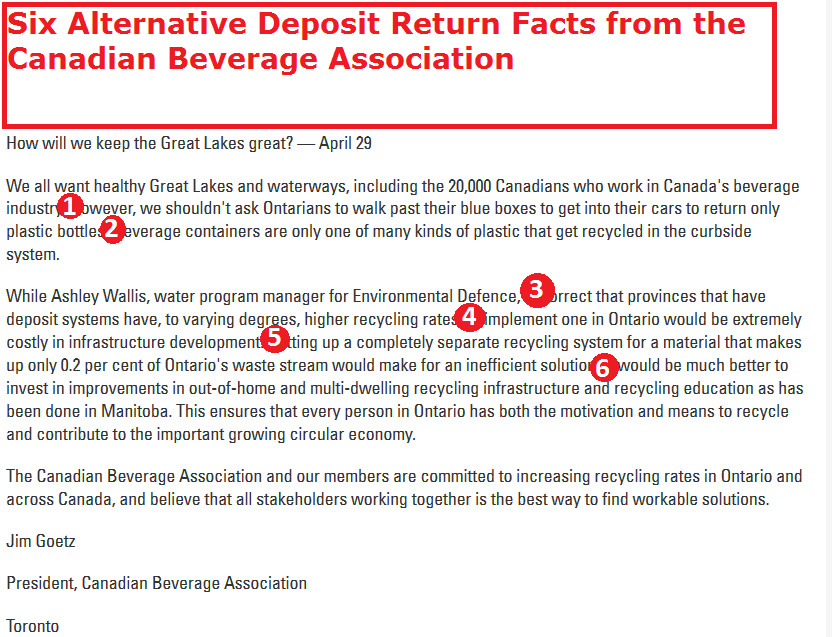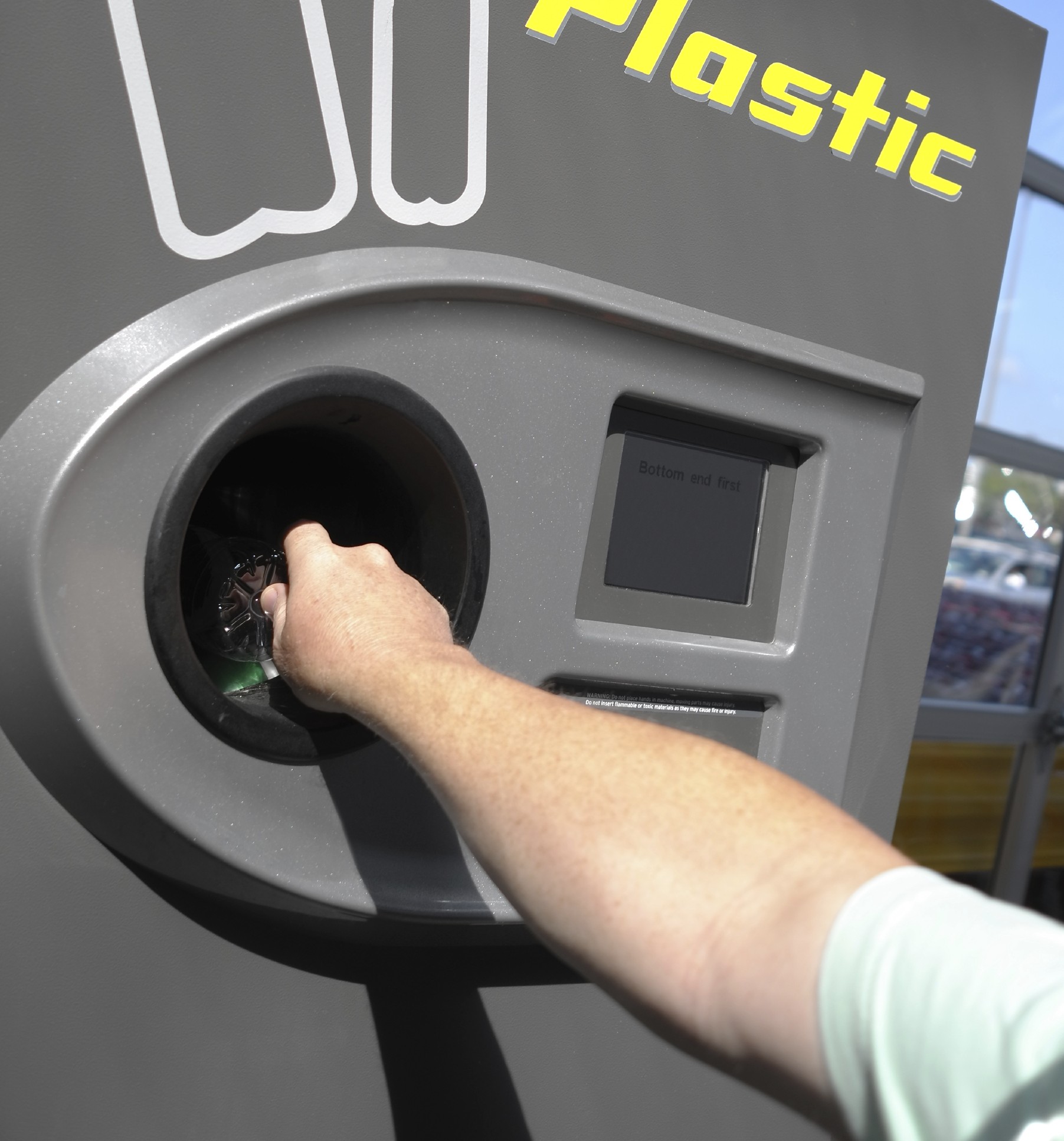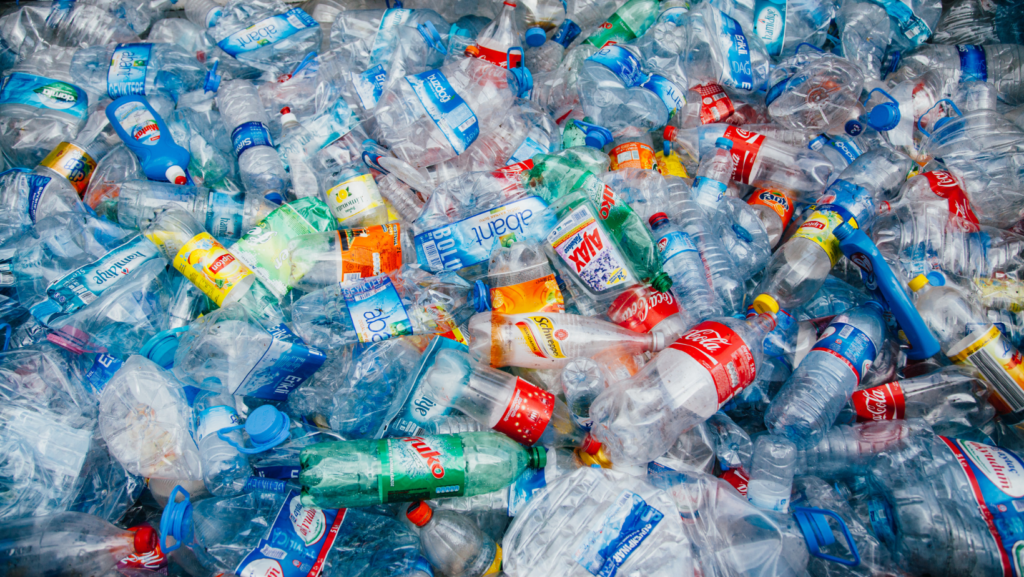Yesterday, we posted the first part of our response to the Canadian Beverage Association’s claims saying that a deposit return program for plastic bottles wouldn’t work in Ontario.

Here’s the rest.
Industry talking point #4: Deposit systems are too expensive
…to implement [a deposit system] in Ontario would be extremely costly in infrastructure development.
Fact:
In other jurisdictions, deposit systems more than cover their own costs through container handling fees, the sale of the recovered materials, and unredeemed deposits. And there are cost savings too! Municipalities and property management companies spend less on litter collection, and taxpayers save money on reduced waste disposal.
It’s also worth pointing out that right now manufacturers only pay for half of the Blue Box program – the other half is paid for by municipalities. It’s only fair that industry shoulders the full cost of recovering the trash they put on the market.
Industry talking point #5: Bottles aren’t a big part of the waste stream
Setting up a completely separate recycling system for a material that makes up only 0.2 per cent of Ontario’s waste stream would make for an inefficient solution.
Fact:
Quantifying beverage containers as a percentage of Ontario’s waste stream is highly misleading. Waste is measured by mass—and bottles are light. That’s why they appear to make-up only a small fraction of the waste stream. Seven bottles weigh about the same as one apple. But seven bottles take up way more space in our parks and landfills.
Also, unlike apples, plastic bottles don’t decompose. They just break into smaller and smaller pieces where they can be eaten by fish and wildlife, and make their way into the food chain.
In fact, in Ontario, despite near universal access to curbside recycling, 1.5 billion bottles end up in the environment or landfill every year. That’s the equivalent of over 26,000 trucks full of plastic. Lined up end-to-end, those trucks would span 210km – roughly the distance between London, Ontario and Toronto.
Industry talking point #6: We have a better plan
…out-of-home and multi-dwelling recycling infrastructure, and recycling education as has been done in Manitoba
Fact:
Instead of a deposit return, industry wants to bring the program they have in Manitoba to Ontario. But the program isn’t new or innovative – it’s just more recycling bins and education. It completely misses the fact that part of the problem is human behaviour. Low recycling rates aren’t just because people don’t know how to properly dispose of cans and bottles. The vast majority of Ontarians know that plastic bottles and aluminum cans are recyclable, but the province still has shamefully low recycling rates.
Unsurprisingly, even with this new program, recycling rates in Manitoba are still well below those of neighbouring jurisdictions with deposit return programs. Industry claims that the province has achieved a 65 per cent recovery rate, but skeptics argue that that statistic is inflated (see page 55 of this report).
Regardless, the program may have already peaked. Despite having added 15,000 more bins to the program in 2015 (more than any other year), the recycling rate only rose 1 per cent (from 64 to 65 per cent). With results like that, it will be a long, slow crawl to anything resembling the recycling rates that are achieved in other jurisdictions through a deposit return program.
And none of this addresses that a well-run deposit system could generate additional revenue through unredeemed deposits to reinvest in the protection and restoration of the Great Lakes.
When you breakdown industry’s arguments against a deposit return program in Ontario, it’s clear that they don’t hold any water at all. If the CBA is truly committed to increasing recycling rates in Ontario (as it states in its letter), then it would support seeing a deposit on plastic bottles in the province.









